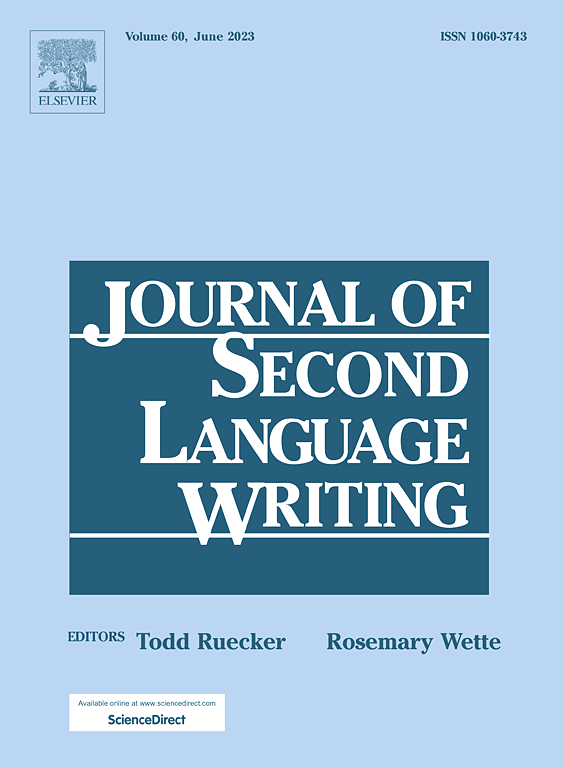Discourse complexity measures as indices of L2 writing proficiency: Insights from propositional connection and relation
IF 4.5
1区 文学
Q1 LINGUISTICS
引用次数: 0
Abstract
Complexity is a crucial feature of L2 writing development. While substantial measures have been well-established as indices of L2 writing proficiency, they are primarily focused on the lexical and syntactic complexity of learner texts. Discourse complexity (DC), especially concerning connections and relations between propositions, remains underexplored despite its importance in discourse organization in L2 writing. This study investigates DC measures for L2 written production in both the absolute and relative/cognitive dimensions. A Rhetorical Structure Theory (RST) dependency treebank of 216 argumentative essays was created to investigate the discourse structures in learner texts across three proficiency levels in the Common European Framework of Reference for Languages (CEFR). Our analysis suggests that more proficient L2 writers tend to produce more logically complex rhetorical relations, longer rhetorical length, and stronger propositional connectedness in content development and organization. Further, we show that overall propositional connectedness and mean discourse distance are both able to distinguish between texts at the CEFR A2, B1, and B2+ levels, and can be useful indicators of L2 writing proficiency. These findings not only provide novel insights into L2 complexity at the discourse level, but also carry pedagogical implications for the teaching of coherence and rhetorical organization in L2 writing classrooms.
语篇复杂性作为二语写作水平的指标:来自命题联系和关系的洞察
复杂性是第二语言写作发展的一个重要特征。虽然很多衡量二语写作熟练程度的指标已经确立,但它们主要关注学习者文本的词汇和句法复杂性。语篇复杂性(DC),特别是关于命题之间的联系和关系,尽管它在二语写作中的语篇组织中很重要,但仍未得到充分的研究。本研究从绝对和相对/认知两个维度调查了第二语言书面生产的DC测量。基于修辞结构理论(RST)建立了216篇议论文依存树库,以考察欧洲共同语言参考框架(CEFR)中三个水平的学习者文本中的话语结构。我们的分析表明,更熟练的第二语言作者倾向于在内容发展和组织中产生更复杂的逻辑修辞关系,更长的修辞长度和更强的命题连通性。此外,我们发现整体命题连通性和平均语篇距离都能够区分CEFR A2、B1和B2+水平的文本,并且可以作为二语写作熟练程度的有用指标。这些发现不仅在语篇层面上对二语复杂性提供了新的见解,而且对二语写作课堂上的连贯和修辞组织教学具有教学意义。
本文章由计算机程序翻译,如有差异,请以英文原文为准。
求助全文
约1分钟内获得全文
求助全文
来源期刊

Journal of Second Language Writing
LINGUISTICS-
CiteScore
8.80
自引率
13.10%
发文量
50
审稿时长
59 days
期刊介绍:
The Journal of Second Language Writing is devoted to publishing theoretically grounded reports of research and discussions that represent a significant contribution to current understandings of central issues in second and foreign language writing and writing instruction. Some areas of interest are personal characteristics and attitudes of L2 writers, L2 writers'' composing processes, features of L2 writers'' texts, readers'' responses to L2 writing, assessment/evaluation of L2 writing, contexts (cultural, social, political, institutional) for L2 writing, and any other topic clearly relevant to L2 writing theory, research, or instruction.
 求助内容:
求助内容: 应助结果提醒方式:
应助结果提醒方式:


